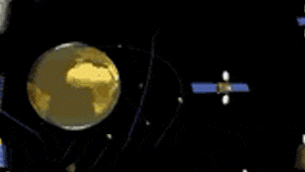Training the next generation of satnav experts
The fourth ESA International GNSS Summer School, held in Slettestran, Denmark, early this month saw young engineers and scientists learning about satellite navigation systems and competing to propose an original satnav application.
The Global Navigation Satellite Systems (GNSS) Summer School, the second organised under ESA auspices, saw the participation 1–10 September of 48 students from 22 different countries, including graduate students, doctoral candidates, early-stage researchers and young professionals.
The school was supported this year by a total of 20 lecturers from 13 countries, including renowned scientists, professors and professionals in the field.

Rene Oosterlinck, ESA Director of Galileo and Navigation-related Activities, formally opened the school. This was followed by the inaugural lecture of Frank Van Diggelen, author of the book A-GPS: Assisted GPS, GNSS, and SBAS and Technical Director of Broadcom Corporation, who provided a comprehensive review of time, distance and navigation techniques throughout history and the outlook for this field.
The summer school was hosted by the University of Aalborg (Denmark) and organised in close coordination with the University FAF Munich (Germany), with the support of Stanford University (USA), Graz University of Technology (Austria) and the Institute Superieur de l’Aeronautique et de l’Espace (France).
The summer school provided students with an overview of the design and development of satnav systems and their applications. Lectures on GNSS fundamentals included navigation solution, access techniques, modulation, ionosphere, troposphere, interference and multipath.
Dedicated lectures covered existing and planned GNSS initiatives worldwide (GPS, Glonass, Galileo, Beidou/Compass, IRNSS, QZSS), GNSS regional augmentation systems (EGNOS, WAAS and MSAS), GNSS receivers, GNSS/INS sensor fusion and assisted GNSS technologies.

The sessions concluded with an outlook for the field – ‘Quo Vadis GNSS’ – given by Günter Hein, Head of ESA’s Galileo Operations and GNSS Evolution Department.
The programme included a competition in which students proposed innovative GNSS applications, including a description of the proposed product/service, the technical approach for its implementation, a market analysis and a marketing summary. A jury of experts from several European universities, Stanford University and ESA selected the best proposals.
The programme and lectures were received enthusiastically by the attendees, as indicated by some of the student’s comments: “A wonderful opportunity for learning and networking,” said Diana Fontanella from Italy; “One of the most interesting experiences of my life,” noted Moshe Tocker from Israel; “Nice experience, I learned a lot together with a group of lovely people. A recommendation for everybody,” added Kim Vijle from Belgium.
The school is part of ESA’s Education in Navigation (Edunav) programme, which fosters GNSS training. Edunav, a joint venture between ESA’s Education Office and the Navigation Directorate, includes the creation of dedicated doctoral research opportunities, GNSS training tools for universities, support to GNSS conferences, the set-up by ESA of a GNSS wiki (Navipedia) and the preparation of dedicated educational books on GNSS.















 Germany
Germany
 Austria
Austria
 Belgium
Belgium
 Denmark
Denmark
 Spain
Spain
 Estonia
Estonia
 Finland
Finland
 France
France
 Greece
Greece
 Hungary
Hungary
 Ireland
Ireland
 Italy
Italy
 Luxembourg
Luxembourg
 Norway
Norway
 The Netherlands
The Netherlands
 Poland
Poland
 Portugal
Portugal
 Czechia
Czechia
 Romania
Romania
 United Kingdom
United Kingdom
 Slovenia
Slovenia
 Sweden
Sweden
 Switzerland
Switzerland





























